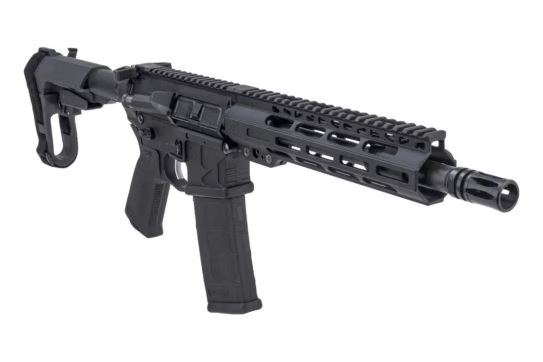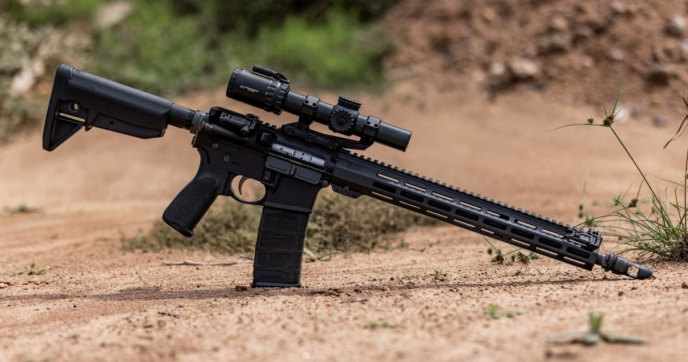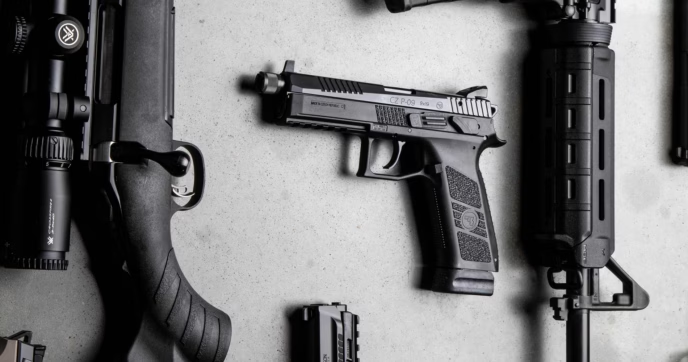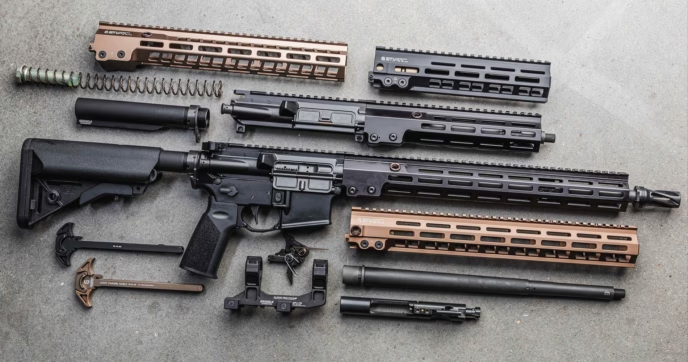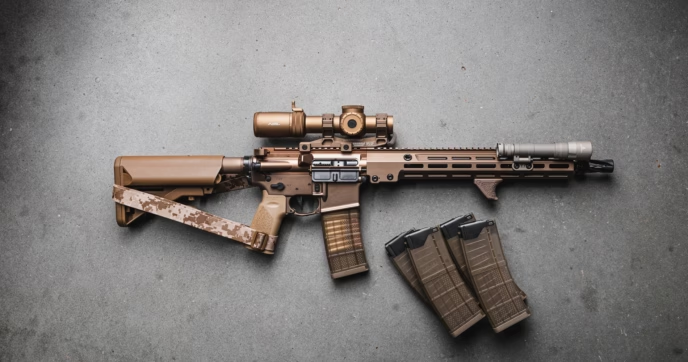Among the ever-growing lineup of AR-15s that make their way into the market, AR-15 pistols continue to be some of the industry’s most popular firearms. But for newcomers to the platform, hearing the phrase “AR Pistol” can raise some eyebrows, since ARs can only be rifles, right? Well, not necessarily.
Although most AR-15s are classified as rifles, it’s absolutely possible to own an AR-15 with a shorter barrel that’s classified as a pistol. Despite the laws regarding AR pistol ownership varying from state to state, for the most part, they’re perfectly legal to own, but this isn’t the only reason they’re so popular. AR pistols offer an exceptional amount of utility, with them excelling in a variety of roles, including recreational shooting and even defensive applications.
However, just like with choosing an AR-15 rifle, picking out an AR pistol can be quite challenging since there are dozens of high-quality makes and models to consider. And on top of that, you also have the choice to build your pistol instead of buying one. Fortunately, AR pistols are the topic of conversation today, and below, we’ll be covering what to know before you start your search for one.
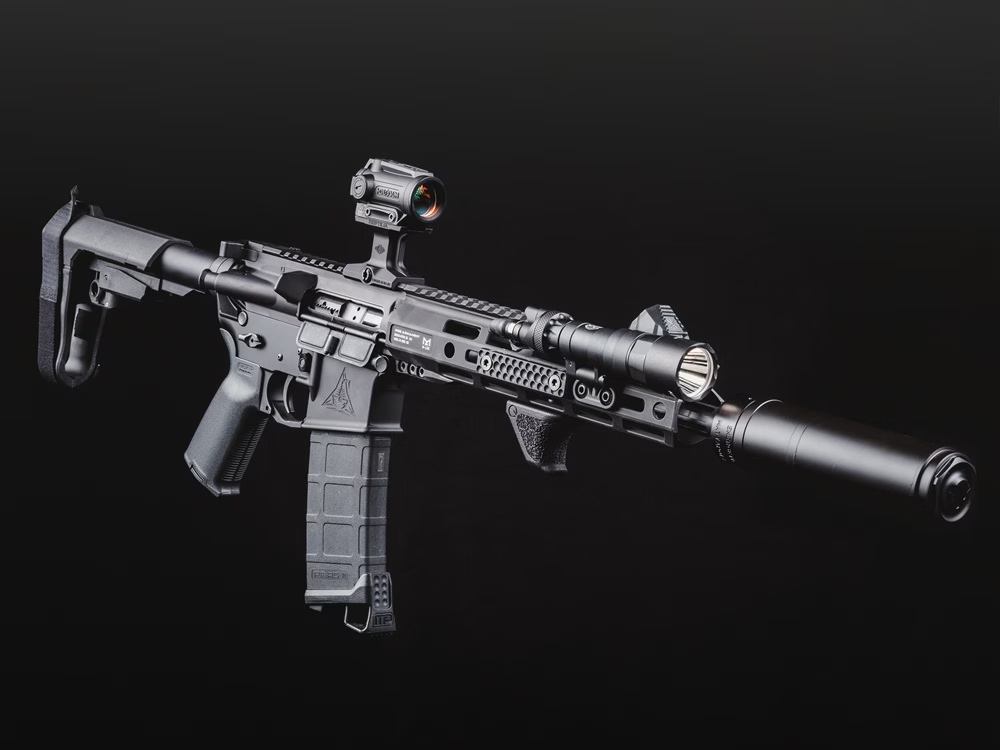
Understanding AR Pistol Fundamentals
Simply put, AR pistols are not the same as AR rifles. For a rifle to be classified as such, it needs to have a barrel length of 16 inches or longer, making 16-inch barrels the standard for most AR-15s. This barrel length is great for general purpose builds, but it’s important to note that GP rifles are more a jack of all trades, meaning they fare well in most applications while not necessarily being the best tool for the job—a notion that becomes exceedingly evident in close quarters applications.
As you’d likely suspect, having a longer barrel makes maneuvering around tight spaces a bit of a challenge. And while this isn’t that big of a deal at the range, in matters of home defense or other CQB-esque applications, a longer barrel isn’t all that helpful. And it’s for this reason that enthusiasts often opt for shorter 13.7- and 14.5-inch barrels with pinned and welded muzzle devices. This brings the overall length of the barrel up to 16+ inches, but even with such barrels, the overall length of the rifle will still be around 30+ inches with the stock extended. So, to go even shorter, you’re left with two options: buy/build a Short-Barreled Rifle (SBR) or an AR pistol.
In a perfect world, SBRs would be the ideal choice, as they give you the same freedom of customizability as rifle, just in a more compact package. However, like suppressors, they’re classified as an NFA item, meaning you have to fill out a Form 4 with the ATF and purchase a tax stamp, on top of buying the rifle and doing a standard background check. Then, after that, you’ll have to wait to be approved before the SBR can be transferred fully transferred over to you—a process that can take anywhere from a few days to several months. This is where AR pistols come into play. Since they aren’t an NFA item, all you need to do is purchase it, complete a background check, and you’re good to go, assuming your state allows them in the first place.
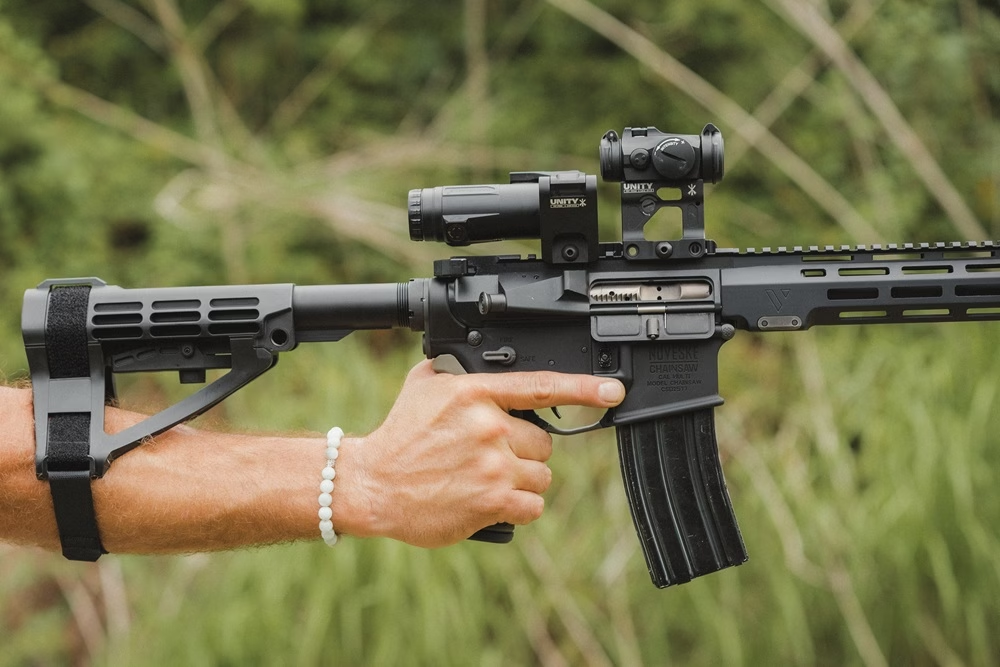
Legality of AR Pistols
Although AR pistols are legal to purchase and own in most states, it’s critical to recognize that since they’re classified as pistols instead rifles, there are certain rules to follow when you own one.
For starters, AR pistols cannot use a rifle stock, but they can use a pistol brace instead. Adding a rifle stock to your pistol would make it an unregistered SBR, which is illegal. While pistol braces don’t always offer adjustability, modern ones like SB Tactical’s SBA3, SBA4, and SBA5 braces, as well as the Gearhead Works Tailhook MOD2 brace system all have adjustable positioning, allowing you to freely adjust them to find the most ideal brace point based on your arm’s length. Additionally, you can use a pistol buffer tube as well, which is essentially a buffer tube with foam surrounding it. While not as ideal of a setup, with some training, they can be pretty effective.
As far as accessorizing your AR pistol goes, most accessories can be added to your build with no issues, with optics, muzzle devices, and slings all being perfectly legal. Where the water starts to get murky is with foregrips. AR pistols cannot have vertical foregrips, as this would violate NFA restrictions. The ATF has stated previously, however, that one can add angled foregrips or hand stops. If you own an AR pistol, it’s imperative that you follow all ATF and NFA guidelines, as well as your state’s laws and regulations on AR pistol ownership.
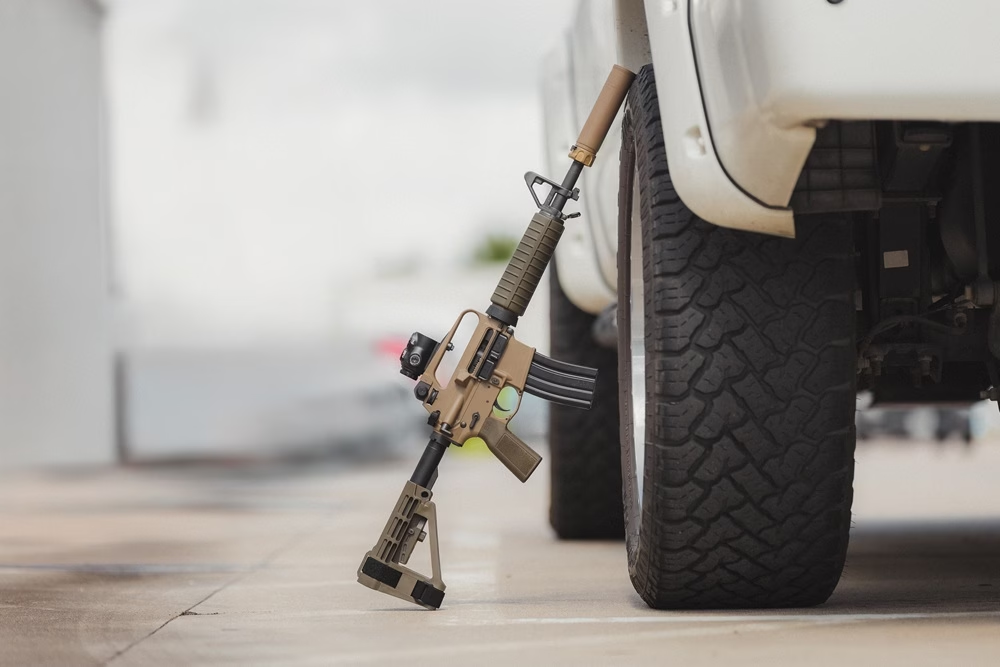
Choosing an AR Pistol
Just like with choosing an AR-15 rifle, you have the choice to either build or buy one.
Buying a complete AR pistol outright is by far the most convenient choice. Almost every AR-15 manufacturer offers a variety of different AR pistols with brands like Geissele, Daniel Defense, and Evolve Weapon Systems being some of the most notable. Plus, just about all of them come with some form of a factory warranty that would protect your pistol if something went wrong with it. While unlikely, if your AR had a defect or some other failure, you’d likely be able to send it back to have it repaired or replaced. Granted, this varies depending on the manufacturer, but for the most part, you’ll be covered in most cases.
Building an AR pistol is nearly identical to building a rifle; you’ll just be subbing the stock for a brace or a pistol buffer tube assembly, and you’ll forego select components like vertical foregrips. That said, it’s important to note that building a pistol isn’t as clear-cut a process as it is for rifles. The ATF has specific rules and guidelines that dictate how one can go about building an AR pistol. For instance, if you were to use a lower receiver that was originally sold and classified as a rifle, putting a brace on it wouldn’t reclassify it as a pistol since it was originally sold as a rifle, making it an illegal SBR. As such, if you’re intent on building a pistol, it’s best to start with either a stripped lower, or a complete one that’s built and classified as a pistol lower.
Regardless, building offers the most in terms of customizability, but this comes with the caveat of you being your own quality control so-to-speak. Since you’ll be building the pistol yourself, it’ll be up to you to make sure that everything is installed correctly, and in the unlikely event that your pistol was to have a catastrophic failure or be otherwise damaged, you wouldn’t have a factory warranty to fall back on.
Regardless of which way you go about obtaining one, there are a lot of high-quality rifles and parts to consider using for your next build—so much so that it can be confusing if you don’t already know to what to look for. To alleviate some of the stress that may come with building an AR pistol, below, you’ll find a list of factors to consider before setting off to do so.
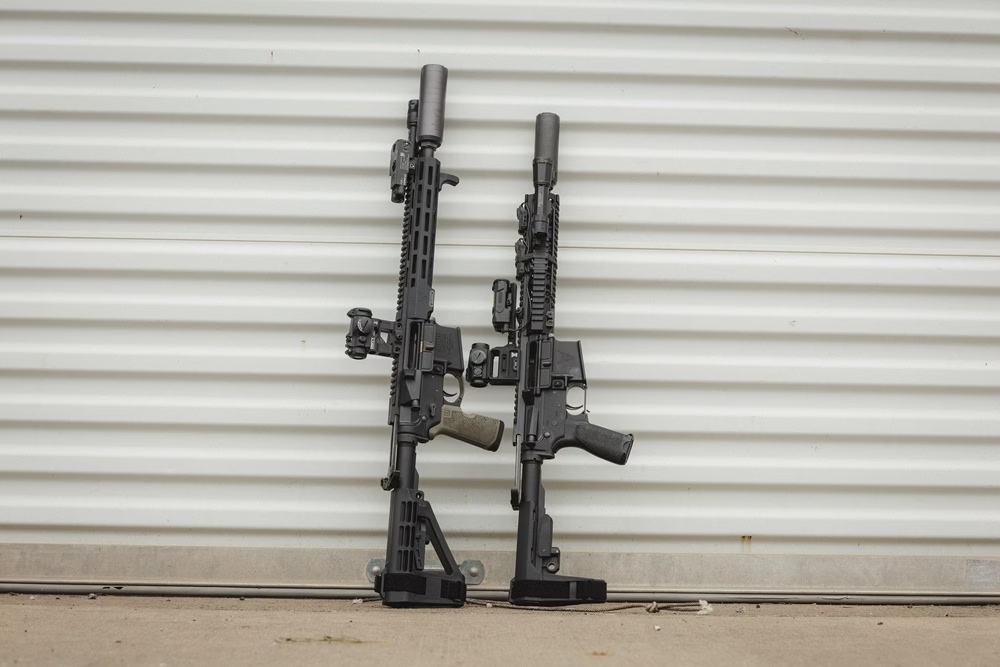
Barrel Length Considerations
If you’re new to running AR pistols, it may seem enticing to look for the smallest size AR-15 possible, but it’s important to note that your pistol’s barrel length will play a vital role in how your final build performs. While you could theoretically select just about any AR barrel length you want for your build, you’ll need to take your cartridge’s characteristics into consideration before choosing one.
Take 5.56 NATO for example—the most common chambering for AR-15s. 5.56 NATO performs exceedingly well out of a multitude of different length barrels, but the shortest feasible barrel length for that cartridge is 10.5 inches. Any shorter, and your pistol will have far less muzzle velocity, worsened terminal ballistics, and a far greater muzzle flash and concussion. Because of this most enthusiasts opt for 10.5-, 11.5-, and 12.5-inch barrel options when building a 5.56 pistol.
If you want to go shorter, it’s best to opt for a different caliber like .300 Blackout—easily the second most popular AR-15 cartridge. Compared to 5.56 NATO, .300 Blackout produces a much lower chamber pressure, requires less dwell time (the time the bullet spends in between the chamber and gas port) to achieve its optimal velocity, and the average .300 Blackout load uses less propellant than your typical 5.56 load. Due to this, it performs well in barrels as short as 7.5 and 8 inches long, with some .300 Blackout Pistol Uppers having barrels as short as 5.5 inches long.
In a similar vein, other calibers pair well with other barrel lengths. For further example, calibers like 6.5 Grendel and 6mm ARC, two popular hunting calibers, can perform well out of 12.5-inch barrels, though any shorter would result in a serious loss of energy. This makes them a popular choice for more compact hunting builds, as they’re commonly available in 12.5- and 13-inch barrels.
AR Pistol Caliber Options
As highlighted above, there are a myriad of different calibers you can select for your AR pistol build.
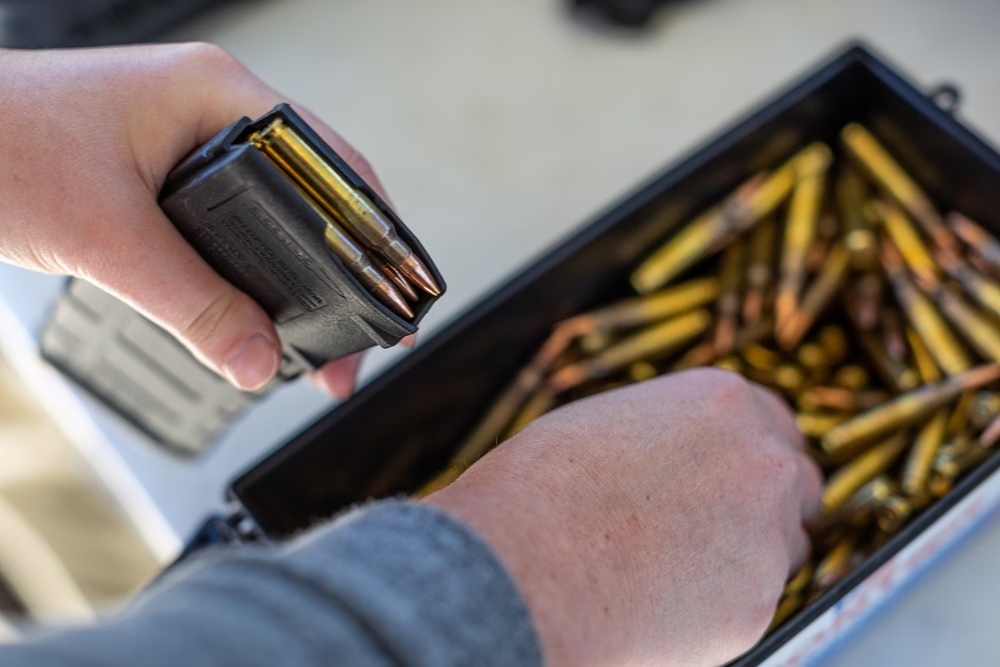
5.56 NATO
For more general-purpose use, 5.56 NATO is easily one of the top calibers to consider. Simply put, it’s a solid jack of all trades that can be more than suitable for a multitude of different applications. Despite being optimized suited for 14.5-inch and longer barrels, with the right load it’s still a practical choice for shorter length AR pistol builds. Even further, throughout history, the AR-15’s design has been the basis of many successful shorter rifle systems such as the MK18, which uses a 10.5-inch barrel, and the CAR-15 XM177E2 which used an 11.5-inch barrel.
As we went over above, 5.56 NATO can be very effective out of shorter barrels. Plus, with it being one of the most common calibers in production, there are several unique ammo loads and variants that are suited for a variety of applications. There’s an assortment of ammo options to consider, ranging from expanding ammo for defense to standard loads for recreational shooting. Also, 5.56 NATO is one of the more budget-friendly calibers for the AR-15, with ammo ranging anywhere from around $0.35 per round for standard FMJ ammunition, to upwards of $1.50 to $2.00+ for more specialized loads.
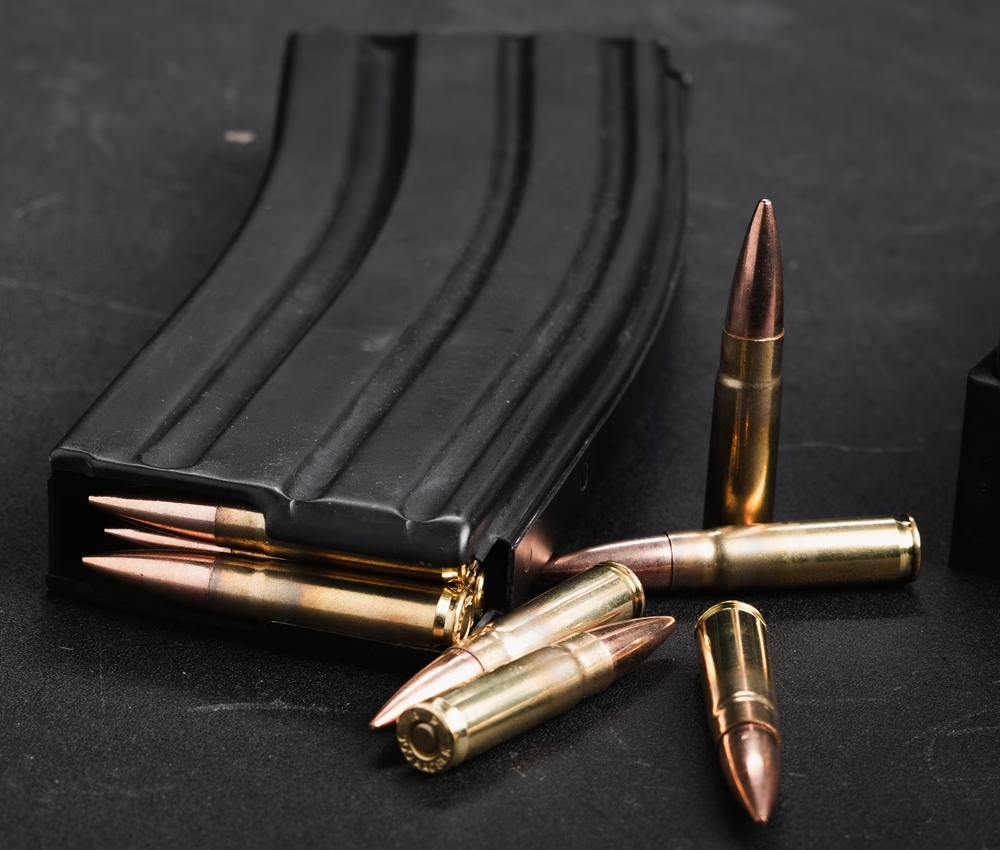
.300 Blackout
.300 Blackout is often viewed as the inverse of 5.56 NATO. We hinted at its capabilities above, but one area in which .300 Blackout excels is in its suppressibility. Being a lower pressure cartridge that fires a heavier projectile, it’s far easier to suppress compared to 5.56, and it’s capable of delivering far more energy on target, making it one of the most popular home-defense cartridges for the AR-15. With the right load and suppressor combo, AR pistol can be exceptionally quiet and even hearing safe in some instances. Plus, since .300 Blackout is much more viable out of a shorter barrel, you can use a suppressor and still have a relatively compact setup.
Compared to 5.56 NATO, .300 Blackout does have some considerations. For starters, it isn’t all that well suited for general purpose use—its slower velocity and heavier projectile weight limit its effective range, but it’s critical to note that AR pistols aren’t typically used for long-range shooting in the first place. Still, something that is worth noting is its cost per round. .300 Blackout most often hovers around the $0.60 to $0.75+ range for standard FMJ ammunition, while subsonic, defensive, and other specialty loads can cost as much as $1.00 to upwards $2.50+ per round. Still, if you’re looking for a heavy-hitting round compatible with shorter barrels, it’s worth considering.
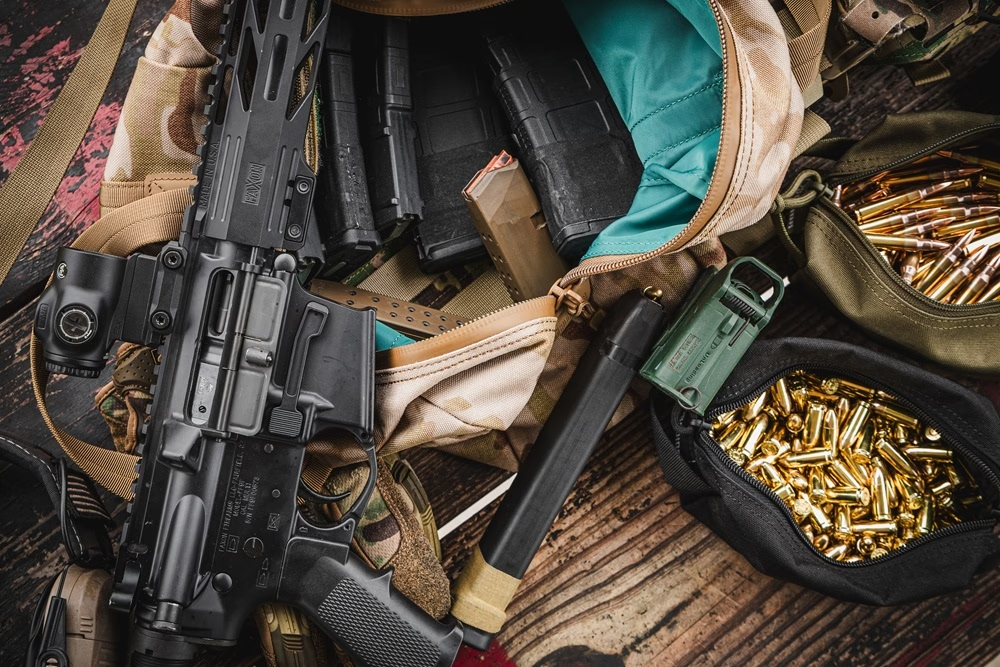
9mm
Although it isn’t an intermediate cartridge like 5.56 NATO or .300 Blackout, 9mm is another practical cartridge for use on AR pistols. While chambering your AR in 9mm would technically make it an AR-9 rather than an AR-15, it’s still worth including in this list due to its sheer popularity alone. Being a pistol caliber cartridge, it naturally has low recoil, can reach its effective velocity in shorter barrels, and is naturally sub-sonic making it easy to suppress. All these features make it a solid cartridge for everything from plinking to home defense.
9mm ammunition is available in a copious number of configurations. Being one of the most prolific pistol calibers on the market, there are several dedicated defensive and sub-sonic loads available, and standard target ammunition is also inexpensive too. 9mm ammo typically costs around $0.30 per round for standard FMJ target ammunition, with specialty loads costing anywhere from $0.70 to upwards of $1.50+ per round.
Something else to consider before springing for an AR-9 upper is its overall compatibility with standard AR components. Depending on the type of AR-9 you aim to build or buy, it’s important to make note of the fact that they can use different pattern magazines. Most off-the-shelf AR-9s use their own dedicated lowers that are designed to use either GLOCK or Colt pattern magazines. There are adapters available that can make a mil-spec lower compatible with Colt pattern mags if you’d prefer to use one lower for multiple uppers. But, if you’re set on building an AR-9, the ideal choice is to opt for a dedicated 9mm AR pistol lower.
Other Calibers
Regarding other calibers, there are many different ones used in AR pistol builds. We mentioned 6.5 Grendel and 6mm ARC earlier, and they’ve been some popular choices due to their overall performance in long-range applications. Even when using a shorter barrel length of 12.5 inches, both calibers still have an effective range of around 800 yards, though this is heavily dependent on the AR pistol’s quality and ammo load. Lastly, both cartridges usually cost around $1.00 to upwards of $2.50 per round.
Other calibers such as 6.8 SPC offer a level of performance that’s comparable to 5.56, with it generally outperforming it in terms of muzzle energy. As such, it’s been a popular hunting cartridge, though it isn’t as commonly available as the other calibers mentioned thus far. Since it isn’t as common as 5.56 NATO, it is a fair bit pricier comparatively, with it usually ranging around $0.60 to upwards of $2.00+ per round, depending on the load.
Additionally, newer cartridges like .338 ARC have become popular as well. Essentially, you can think of it as a beefed-up version of .300 Blackout, making use of a larger .338-inch diameter projectile instead of a .308-inch diameter one. Also, it uses a larger casing and powder charge, giving it more power and a longer effective range than .300 Blackout. Plus, it performs well suppressed and can even be hearing safe, so long as you have the right ammo and suppressor combo. Lastly, being a newer, more niche round, it’s currently in limited production, with it typically costing around $1.00 to upwards of $2.00+.
Conclusion
AR pistols have been some of the most popular AR-15 variants for quite some time now, with many enthusiasts opting for them over SBRs. However, much like with buying an AR-15 rifle, choosing or building one can be a bit of a challenge when you don’t know what to look for.
Ultimately, there is not one single AR pistol make, model, setup, or caliber that is inherently better than the rest. But, depending on your needs and preferences, it’s more than possible to narrow down your options to find what works best for you. As it stands, the AR-15 is one of the most adaptable firearms on the market, so no matter what kind of build you end up needing, you’ll easily be able to tailor your pistol to fit your purpose and needs.
With that in mind, if you plan to build your next AR pistol, we highly recommend checking out our guide on the Legal Barrel Lengths for the AR-15. It goes in-depth on some of the most popular barrel lengths for AR-15s, highlighting their overall capabilities and best use cases. Check it out!
